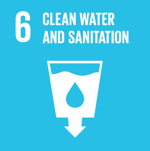Family Livestock Systems in Uruguay and Argentina
 Uruguay
Uruguay
 Argentina
Argentina
Executive Summary
Family livestock systems based on meat production in natural pastures constitute the majority of cattle farmers and rural populations of Uruguay and Entre Ríos (Argentina). The high levels of stocking rate and/or the absence of spatial-temporal management cause overgrazing and poor spatial distribution, which, in combination with climatic variation, contribute to low levels of consumption, energy balance and percentage and weight at calf weaning. These production models with limited animal production and few contributions to ecosystem services are highly vulnerable to climatic and economic changes, which limits the economic result, positive interactions of producers with the commercial sector and the entire meat chain, and conditions the sustainability of family farming.
This project proposed to develop a support system for decisions on grazing management that allows coupling economy and environment at farm and landscape scale. The main hypothesis proposes that it is possible to improve the management of the pasture stocking rate in order to couple the increase of the physical-economic income and environmental performance. This will contribute to solving the problems of grazing distribution and environmental performance, improve economic income and reduce the vulnerability of family livestock producers in the study region.
The technological solution
A new conceptual model of natural field management at the farm and landscape scale will be formalized based on an interdisciplinary and inter-institutional innovation platform to model the relationships between grazing intensity, secondary production, economic results, biodiversity and environmental performance of family farmers in Uruguay and Argentina. Empirical models will be developed on the effect of forage supply on energy consumption, animal movement, forage species, methane production, water balance and biodiversity. These results will be incorporated into simulation models of the plant-animal relationship and will be used in the redesign and co-innovation of properties.
Results
- Strengthen a network of long-term pasture grazing experiments already installed in Experimental Stations of the Faculty of Agronomy (URY) and INTA (ARG).
- Link the experimental platform with the simulation models of the plant-animal relationship and land records on the dynamics of production, pasture and biodiversity use.
- Improve / develop a conceptual model of the plant-animal relationship in pasture breeding systems that enables the redesigning of family livestock systems to couple economic income, biodiversity and environmental performance.
- Provide analysis tools at landscape scale and in livestock systems that contribute to the sustainability of livestock production.
Beneficiaries
- Family ranchers located in Basalto and Sierra del Este, Uruguay and in the Cuenca del Salado and Litoral Sur in Argentina.
- Technicians and ranchers will have a theoretical-practical framework for redesigning property proposals.
Sustainable Development Goals




Participating Organizations
Executor
- Instituto Nacional de Investigación Agropecuaria (INIA) - Uruguay
Co-executor
- UdelaR - Uruguay
- Instituto Nacional de Tecnología Agropecuaria (INTA) - Argentina
Graphics and data
Financing by country (in USD)









